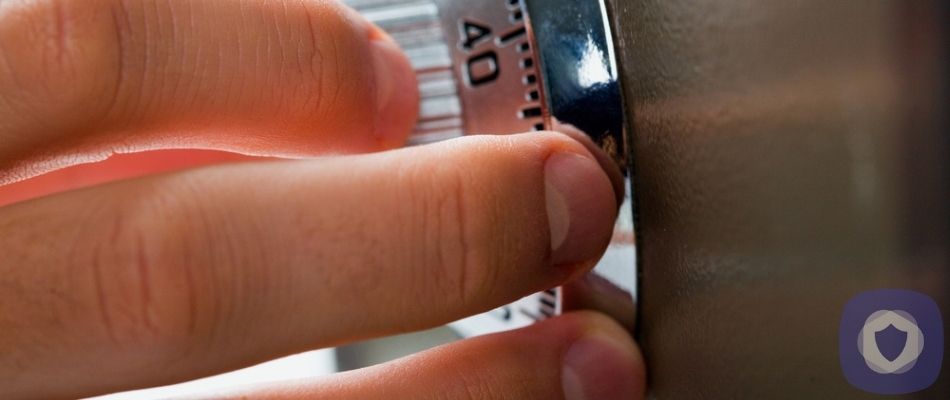Homeowners have many home security concerns; in the case of a break-in, one of the most significant things you can have is a safe. When you buy your first safe, you’ll probably have a multitude of questions and concerns, including:
- Where to install it
- Can the safe be broken into?
- Whether or not to hide it
Installing a safe
First of all, a safe should always be securely anchored. Whether to the wall or the floor, you need security. You should give preference to an external wall or concrete. Avoid installing an electronic safe in a high humidity area such as the laundry, garage, or basement. While you may want a hidden safe (more on that later), don’t keep it so far out of sight that you never think of it or that it’s inconvenient to use. A good tip is also to consider multiple safes.
Hiding your safe
When you buy a safe, some people may tell you to hide it. But you should take care of where you hide it. If you keep it too far out of sight, it’ll eventually slip out of your mind, and you’ll stop using it. For example, if you put it in a hidden basement room, the temptation to postpone putting valuables in there and holding them in drawers could take over, leaving your safe useless in a crisis. Hiding your safe may be pointless as burglars are usually only in a home for less than ten minutes (it takes much longer to open a quality safe). But you may consider having multiple safes.
Where to install my safe?
There are several places to consider installing your safe, and we’ll break down the reasons why:
- On the floor (heavy safe)
- In the wall
- In the floor
- Inside a cabinet
- Against a wall in furniture or on a shelf
Anchored into the floor
Anchoring it into the wall is difficult with a large enough safe, especially if you don’t have concrete walls. You can anchor it into the floor to avoid losing security. Your safe will still be accessible and adequately secured, but it may require some awkward bending to access. The safe isn’t easy to hide, though, so bear that in mind. However, some people cover it with something to hide it, and it’s up to you if you have something suitable.
Wall safes
The wall has to be thick though and you must consider the size of the safe because if it’s too deep, you can’t embed it into the wall. The hole has to be quite large because cement may put pressure on the safe, and it’ll be challenging to open if it’s done incorrectly. An embedded wall safe provides several distinctive advantages. Secure, easy to hide, and not difficult to access. It is somewhat inconvenient to require professional assistance for safe installation, though most houses don’t have thick enough walls to support it.
Embedded in the floor
If you have a concrete or cement floor, you could consider embedding it in the floor. It’s easy to hide, but it’s more difficult to access, and floor safes are more prone to water and dust damage. You’ll also need professional installation, and it’s not possible if you have a wood floor. This isn’t the best place for a safe.
In a cabinet
A great place to install a safe is in a cabinet. It’s easy enough to self-install if you’ve got basic DIY skills, and you can anchor the safe easily. With that said, wood isn’t as strong as cement, so you lose some security doing it this way. The burglar could extract your safe without much drama with time and the correct tools.
Against a wall in furniture or on a shelf:
One of the most common places I recommend is against a concrete wall. On account of the shelf, the safe rests high enough to provide easy access, you don’t have to bend awkwardly to use it, and since it’s anchored to a concrete wall, it won’t be easy to tamper with.
If you put it in furniture, you’ll have several additional advantages. The safe will be easier to access and somewhat hidden with the door closed, and you don’t lose any security since it can still be anchored into the wall. But bear in mind that you’ll need to damage your furniture by making a hole in it.
In the garage
The garage is one of the most common places for a safe. It’s easy to access, and most people use the garage every day, and since we usually have all manner of things being stored in the garage, there’s usually no shortage of things to hide a safe behind… The trouble is, burglars know this and commonly enter via the garage. Not only that, but garages can be pretty humid. Suppose your safe is visible from the street, it presents an additional risk and may even make you a target for a home invasion.
Humidity
As we’ve mentioned a few times, it’s not recommended that you install your safe in a humid room because humidity corrodes electronics and most safes today are electronic. Not only that but even a ”traditional” safe may be damaged over time by rust caused by humidity.
Many rooms sound like a great idea, such as the cellar, laundry room, etc. But the humidity can be damaging. Since when do burglars investigate laundry rooms? Still, suppose you live in an apartment and really don’t have any alternative space; there are some things you can do to combat humidity.
- Using dehumidifiers
- Choose a traditional mechanical safe (key/code with no electronics)
- Check your content regularly to ensure it’s still safe
Diversion safes
A common anti-burglary tip is to create a lure by purchasing multiple safes. You would have a small safe somewhere that’s obvious, but not too obvious, along with a much bigger (and stronger) safe well-hidden elsewhere with more important valuables inside. The first safe is a lure; you can use it for a small amount of cash but not the crucial things; if you’re the victim of a home-jacking, you can just give access to the first safe.
However, some burglars may be aware of this, so some people suggest three safes—two lures (small and large) and a third that is exceptionally well hidden. In the event of a home invasion and criminals asking for the code, we never know in advance how we’ll react, but multiple safes can keep your valuables safer. I usually recommend two safes, easy access safe for daily use and a well-hidden one for less commonly accessed valuables.
Some people keep the lure safe in an obvious place, on the ground floor or in the master bedroom, while the real safe is hidden under the floorboards or in another secure place.
Additional things to consider when installing your safe
- Remember not to install an electronic safe in a humid room. Overall, humid rooms are a bad idea for safes of all kinds, but electronic safes are particularly vulnerable to this damage. If you don’t have any other choice, remember to regularly check your safe contents and use a dehumidifier.
- It’s better to install a fire-resistant safe on the first floor, preferably in the corner of the room, as this is the coolest area in the case of a fire.
- Try not to make a spectacle of having your safe delivered: if it’s delivered in a prominent box or you carry it from your car, you don’t know who’s watching. Try to ensure that it’s delivered in a plain box without security branding.
- If delivered in a labeled box, rip the box up and dispose of it discreetly.
Wrapping up
Check out our review of the best home safes
A home safe provides a valuable place to put all your treasured possessions. Most people put a mixture of cash, jewelry, essential documents, and other valuables into their home safes, a fireproof safe can even protect your valuables in case of a fire. But where you install it makes a difference in how safe your valuables are. You should carefully consider your needs and the layout of your home, and how difficult it will be to install before you decide where your safe will go.
This article has been reviewed and approved by Officer Banta.

Officer Banta is the official SecurityNerd home security and safety expert. A member of the Biloxi Police Department for over 24 years, Officer Banta reviews all articles before lending his stamp of approval. Click here for more information on Officer Banta and the rest of our team.

